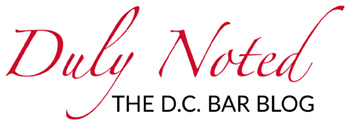Sponsored Content
The Billable Hour Reimagined: A Toolkit for Future-Focused Law Firms
March 21, 2024
Is the billable hour becoming a thing of the past? In an era where client expectations are reaching new heights, it's crucial for your law firm to stay ahead of the curve.
Legal firms should carefully consider several business elements to ensure they are crafting a pricing model that is fair, sustainable, and aligned with both the firm's and client's needs, including:
- Case complexity: The level of legal, factual, and procedural intricacies involved in a case
- Work predictability: the extent to which the scope, duration, and resources required for legal work can be accurately anticipated
- Client's financial capacity: A refelction of the client's financial stability and willingness to invest in the lgal services
- Relationship focus: A law firm's commitment to building long-term, trusting relationship with clients
Each pricing structure has its perks and quirks, so knowing the ins and outs helps you nail the perfect version for your firm. Here are some of the most common fee structures:
- Hourly rate: Charges for time spent on a case
- Flat fee: Charges for specific legal services
- Contingency fee: A percentage of a case-winning settlement or award
- Retainer fee: Upfront payment for future legal services
- Limited scope representation: Charges for time spent on specific parts of a case, making legal services more affordable and flexible
- Hybrid model: A blend of various fee structures for case-specific flexibility
Download LawPay’s full legal billing tool kit and use the “Alternative Fee Structure Decision Matrix” to weigh the pros and cons of each fee structure and find the best option for your firm.
In 2020, lawyers logged merely 2.5 billable hours out of an eight-hour day. This fact highlights a significant opportunity: Optimizing billing processes is not just about getting paid — it’s also about playing the long game for sustained success.
Establishing a clear, transparent billing policy not only streamlines your staff's workflow but also strengthens client trust. Here’s a quick guide to setting up an effective billing policy. First, cultivate clear communication from the start. Next, be sure to draft detailed billing statements, and bill at regular intervals. It’s also important to regularly review your billing policy and update it if necessary. Lastly, encourage feedback from clients and staff to improve your billing practices. For your convenience, LawPay’s full legal billing tool kit contains a billing policy template.
Navigating the new landscape of legal billing is more than just about keeping up; it's about leading the way. LawPay, specifically tailored for legal professionals, reports that it helps lawyers receive payments 39 percent faster on average. It stands out with features like:
- Secure transactions
- Personalized billing
- Automated convenience
- Seamless integration
- Compliance and reporting
Download the full legal billing tool kit for a full suite of resources to help you streamline your communication and cut down on time spent on administrative work. See how LawPay can transform your firm's billing process and help set you up for future success.
Hannah Bruno is senior content writer for LawPay.


